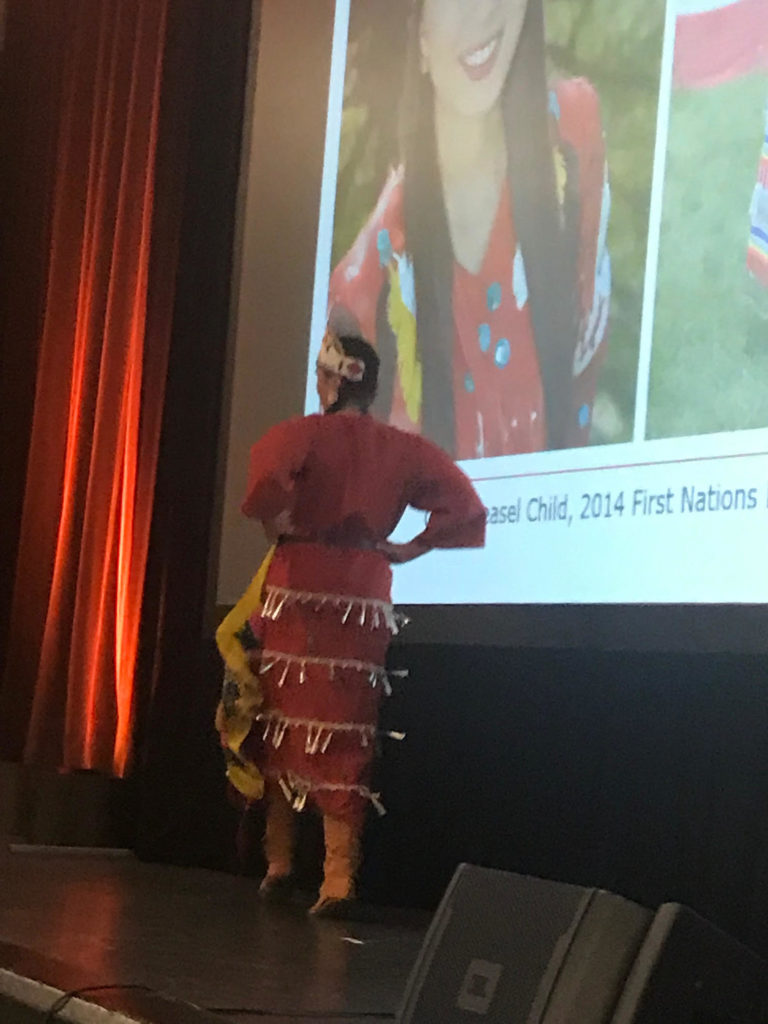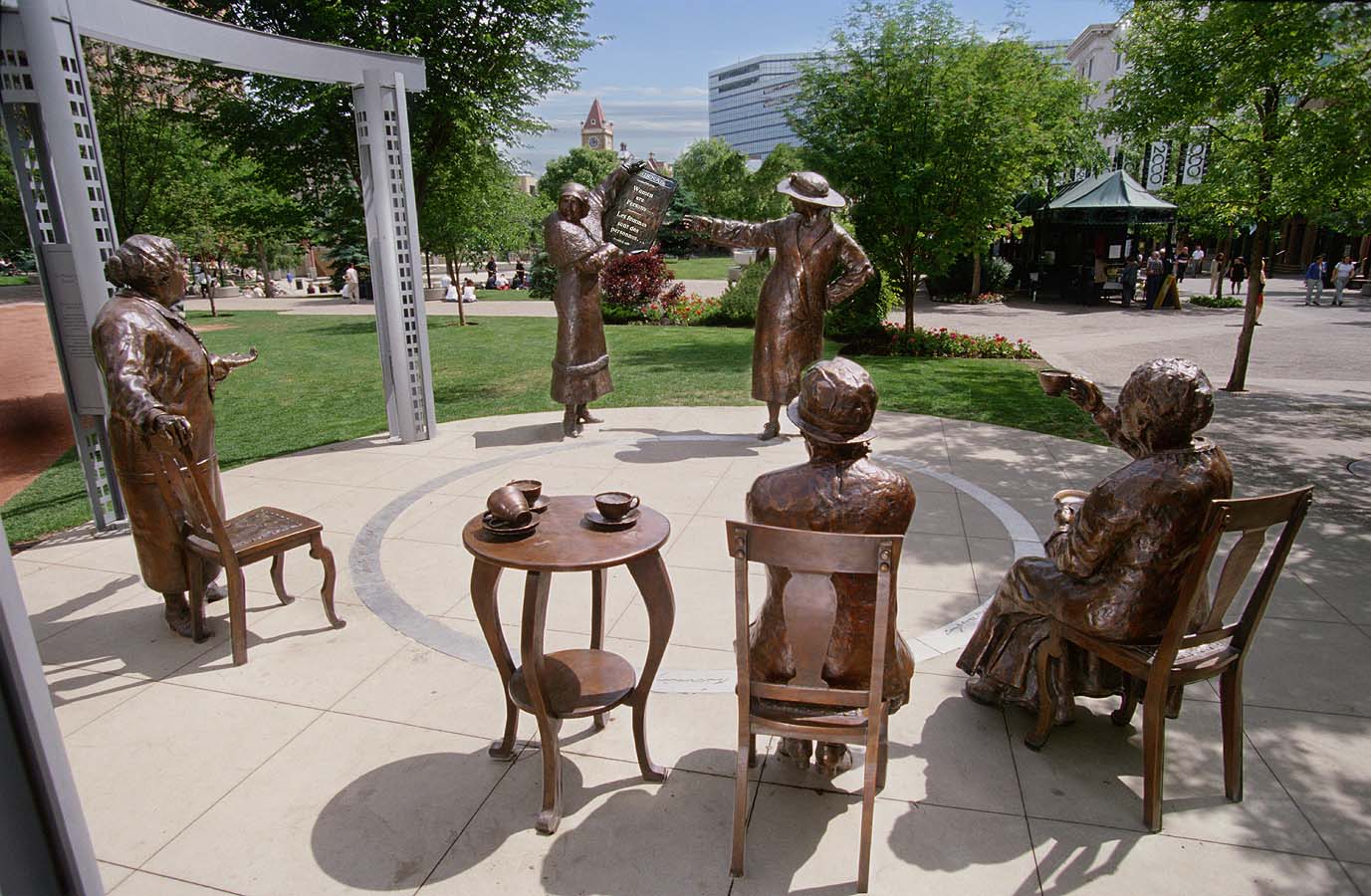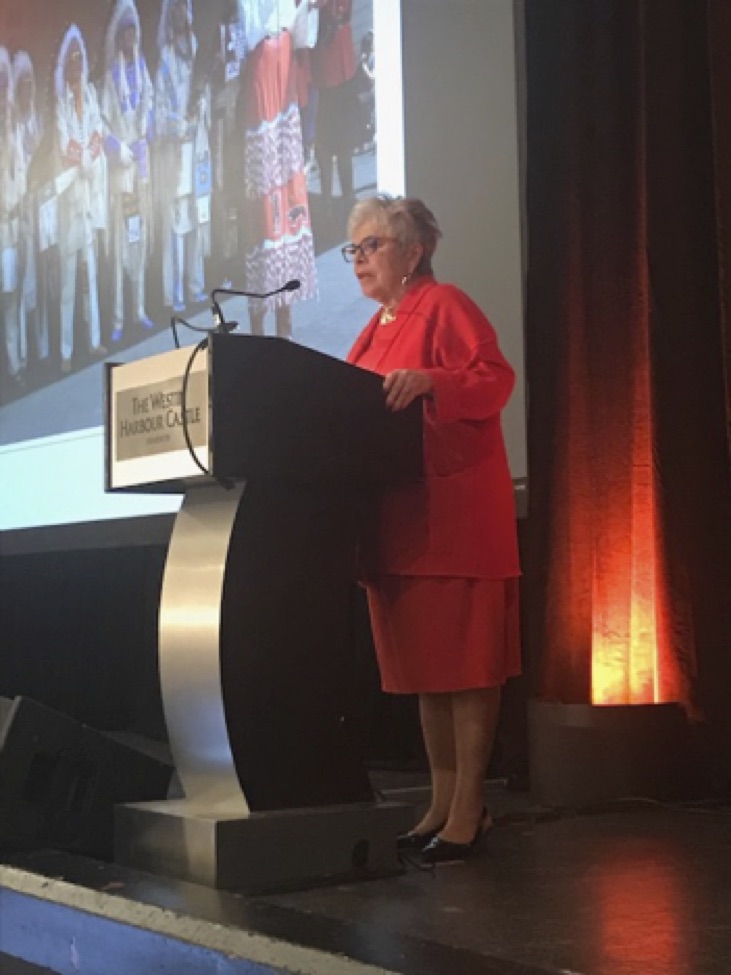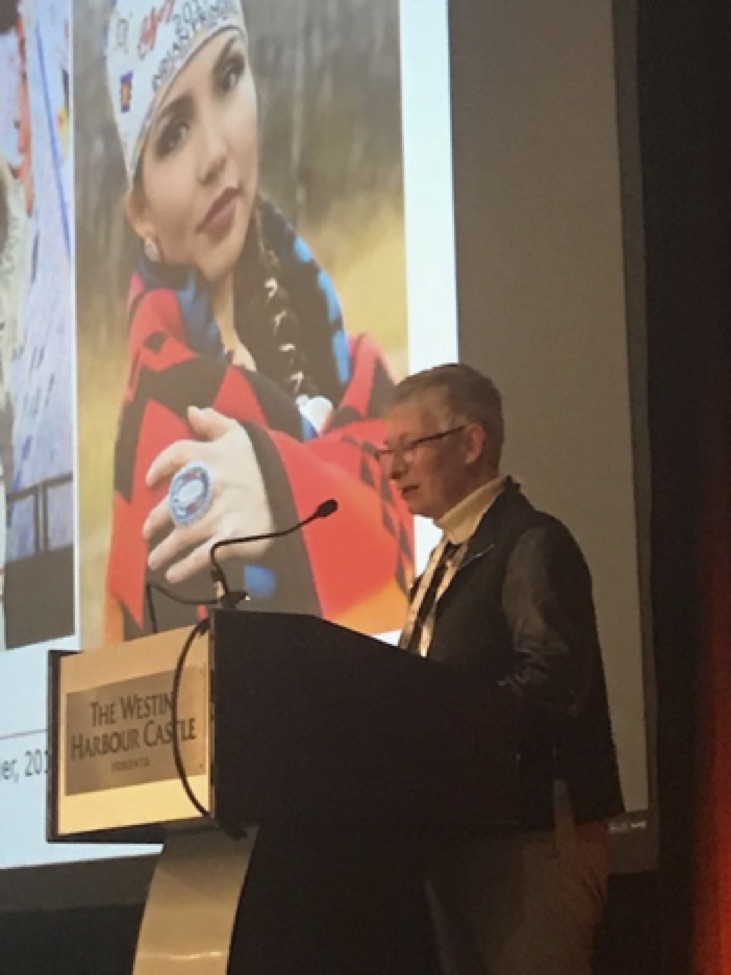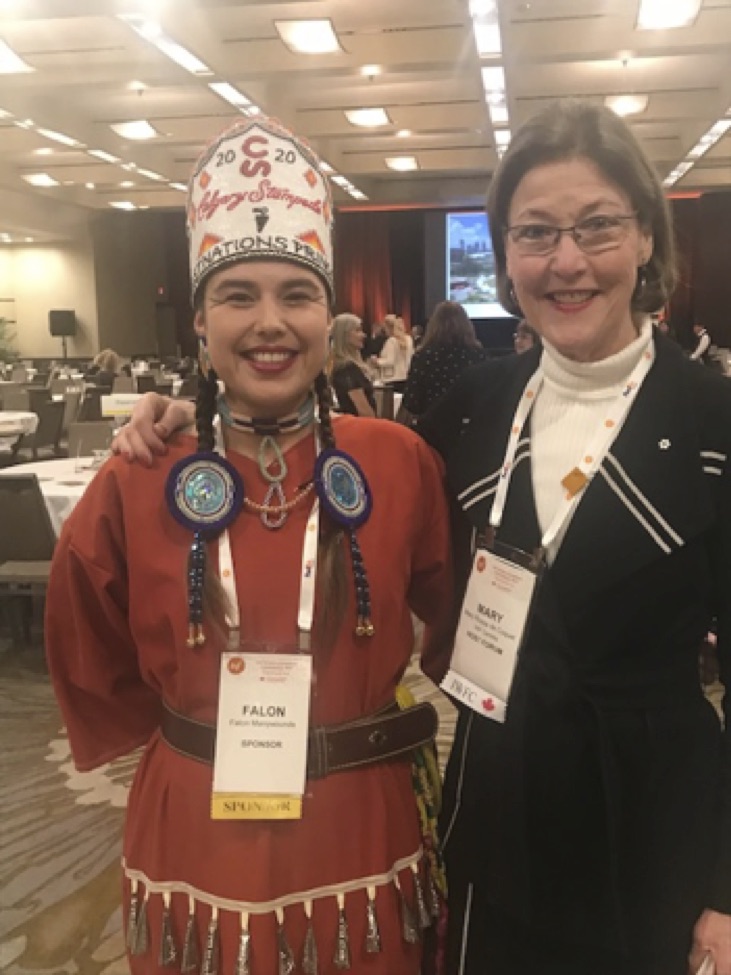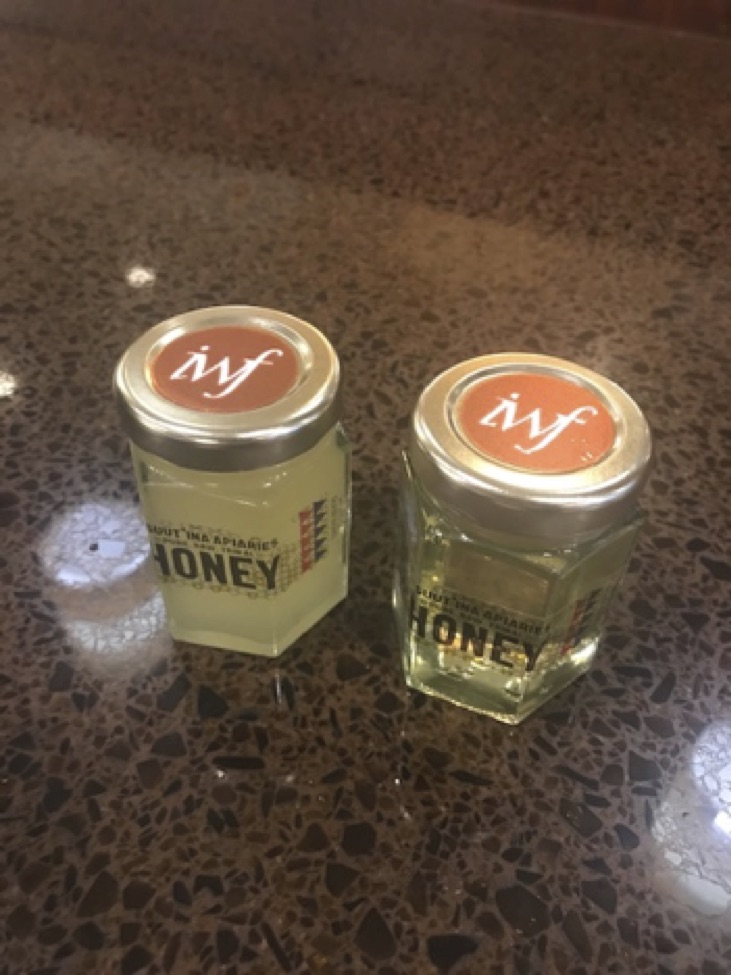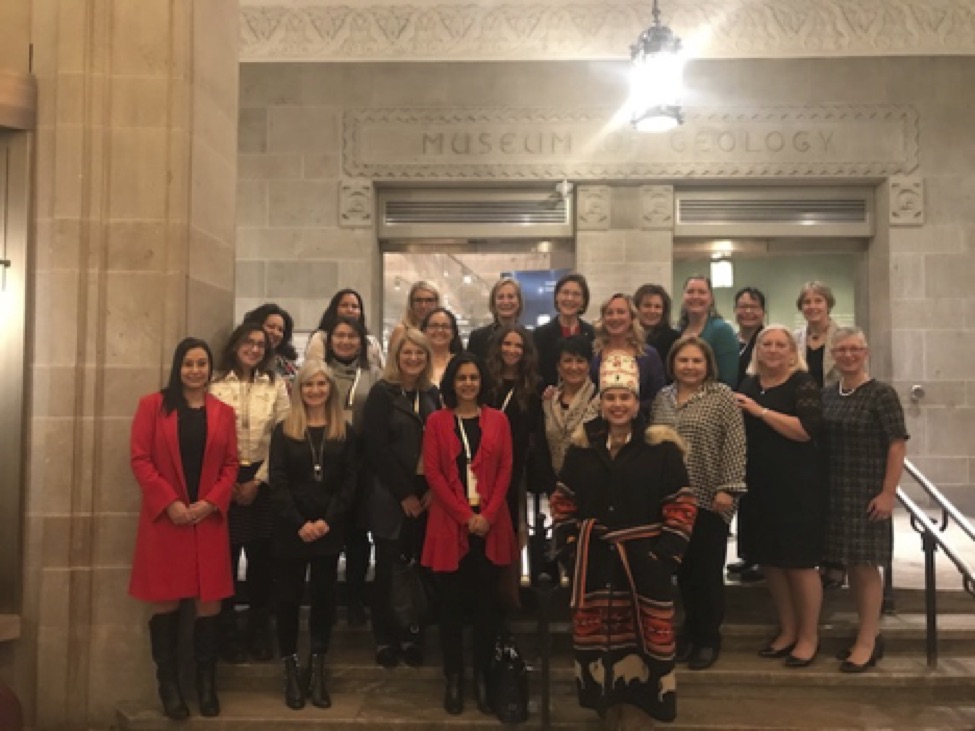
(Continued from Part 1)
International Women’s Forum and Reconciliation
Changes were afoot at the Stampede. It remains one of the few organizations in the country that has maintained a solid partnership with Indigenous people for over 100 years. Representatives from the surrounding Treaty 7 Nations have played an important role in the annual celebrations, through their participation in the Parade (over 500 in some years), the rodeo (as competitors and bullfighters) and the chuck wagon races. Every year, the Indian Princess is crowned as a member of the Stampede Royalty and over twenty families raise their teepees and welcome visitors at the Indian Village. In 2019, these components were renamed to the First Nations Princess and the Elbow River Camp.
Time to Talk: “Canada’s Indigenous Women Leaders: Resilience and Promise for the Future”
Why not celebrate that relationship and build a dialogue around the challenges and opportunities of reconciliation? Further discussions ensued and the culmination of months of conscientious deliberations led to an immersive an experiential breakfast and conversation.
This innovation featured a departure from the traditional “continental” breakfast to a feast of bison, bannock, Saskatoon berries and Tsuut’ina Apiary honey; a dance performance by First Nations Princess Falon Manywounds; an audiovisual presentation depicting the 100 year collaboration between the Calgary Stampede and the Treaty 7 Nations of southern Alberta; drumming and an honour song performed by the Spirit Winds female drum group; and a keynote address by the Honourable Roberta L. Jamieson, President and CEO of Indspire Canada. Each guest also received a lapel pin with a “moosehide” to acknowledge murdered and missing Indigenous women and was invited to take home a logoed jar of the Tsuut’ina honey.
It was billed Time to Talk: “Canada’s Indigenous Women Leaders: Resilience and Promise for the Future”. Our table hosts were Canada’s leading Indigenous female influencers and the sponsoring companies who made the event possible.
At the Westin Harbour Castle
Doors were scheduled to open at 7:30 am, and at 7:15, guests from around the globe started streaming down the escalator to the Frontenac Ballroom at the Westin Harbour Castle. Their eyes and smiles widened as they were welcomed by the beat of the drums and the sweet aroma of bannock, elegantly laid out on long, marble buffet tables, adorned with Saskatoon berries and fall foliage. We were ready, greeting our colleagues and ushering them to tables to meet their hosts. By start time, it was standing room only. The energy and enthusiasm in the room was palpable. Large screens scrolled photos of the First Nations Princesses in front of world icons – the Sydney Opera House, the Pyramids, the Eiffel Tower. Bright colours and pageantry created a sense of celebration. The air was electric as guests engaged in conversations about colonization and reconciliation, bringing their own unique perspectives to the dialogue.
The formal program was short but impactful. The land acknowledgement took the form of a dynamic video, with a commentary by Mary on the Rozsa Foundation’s role in making this creative option accessible to all. Kara represented the sponsors and spoke eloquently about the role of the industry. The IWF international and national presidents took the stage to deliver, emotionally, their pride in hosting this first and hopefully not last acknowledgement of the role of the country’s first and founding Nations. And Dr. Jamieson held the audience spellbound with a riveting address on the urgency and realities of reconciliation, here in Canada and around the globe. To close, Falon took the stage to perform a dance, her feet like feathers gliding effortlessly to the beat of the drums and Indigenous vocables.
Powerful Response
We were overwhelmed with the positive response and proud that our national sisterhood, comprised mostly of members from the dominant culture, and our Indigenous sisters, had embraced and supported this ground breaking initiative. Equally important to Mary and me, we demonstrated how art, visuals, food, music, and dance were powerful communication vehicles and transformative tools that provide a common language to bridge complex divides and pave a path to reconciliation.
(For Part 1 of this article, go HERE)
